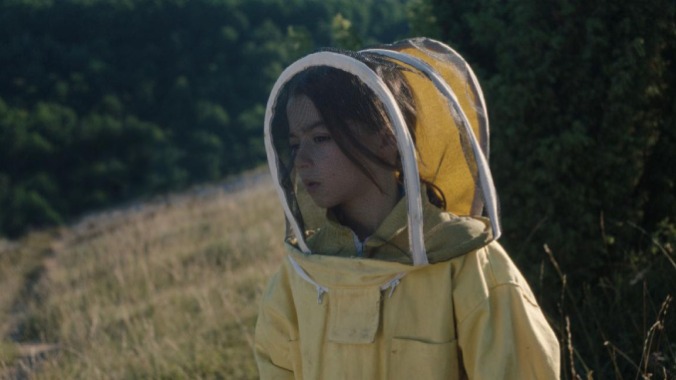20,000 Species of Bees Sculpts an Artful Trans Coming-of-Age Narrative

It’s all too common for families to crack under the pressure of a “perfect” summer vacation. Siblings are forced to share beds, adults stew in the problems they were supposed to leave at home and everyone falls victim to post-sunbathing crankiness. In 20,000 Species of Bees, the feature debut from Spanish writer/director Estibaliz Urresola Solaguren, family vacation dynamics are further tested when the youngest of three children begins to articulate their transgender awakening. While some family members are quicker to support—or even simply understand—the kid’s choice than others, the film never veers into coming-out cliches, painting an artful portrait of a family learning to lean on each other.
While waiting to hear back about a potential teaching position, Ane (Patricia López Arnaiz) decides to take her three children back to her hometown of Laudio in Spanish Basque Country. Hopping on a train from their current French residence, they arrive at Ane’s childhood home, still occupied by her mother Lita (Itziar Lazkano). As family and friends gather to greet them, they naturally express how much each child has grown. In particular, young Aito (Sofía Otero) gets immediate flack for having grown long hair. “People are going to think I have two granddaughters,” Lita teases.
In truth, the child prefers to go by the name Coco and opts to conceal the gender assigned to her at birth when meeting other kids. Ane isn’t especially attuned to her child’s newfound identity, too busy working on sculptures in the studio that used to belong to her deceased father. Lita is far from thrilled about the development, at first mocking Coco’s feminine traits before becoming outright uncomfortable. The only compassionate relative is Ane’s aunt Lourdes (Ane Gabarain), who allows Coco to express burgeoning questions while they both tend to her personal bee colony.
Otero’s performance is absolutely riveting, encompassing a breadth of emotion that exists outside of the young actress’ lived experience. It’s no surprise that she walked away with the Silver Bear for Best Performance at the 2023 Berlin International Film Festival, making her the youngest in the festival’s history to be bestowed with such an honor. Her ability to convey emotional exhaustion and bodily discomfort alongside universal moments of childhood glee and ennui are deeply convincing, allowing for a performance that doesn’t solely focus on the impact of dysphoria. While Otero is immensely talented in her own right, Solaguren’s cooperation with Naizen, a regional association for the families of transgender children, likely helped shape the accuracy of the lead character.
The familial relationships portrayed in the film feel generally rooted in reality, spanning quiet but loving sibling bonds and the anxiety-inducing absence of the children’s father (Martxelo Rubio). Arnaiz’s role as a woman wavering in all of her disparate titles—artist, mother, wife, sister, daughter—is particularly engrossing, with Solaguren intentionally depicting how a dissonance can grow between a woman and those who rely on her without it necessarily springing from carelessness. Ane truly tries to show up for her children, family and career, but the weight of these relationships—and the way that she must inevitably choose to devote time to one and not the other—cause her to visibly drown.
-

-

-

-

-

-

-

-

-

-

-

-

-

-

-

-

-

-

-

-

-

-

-

-

-

-

-

-

-

-

-

-

-

-

-

-

-

-

-

-








































